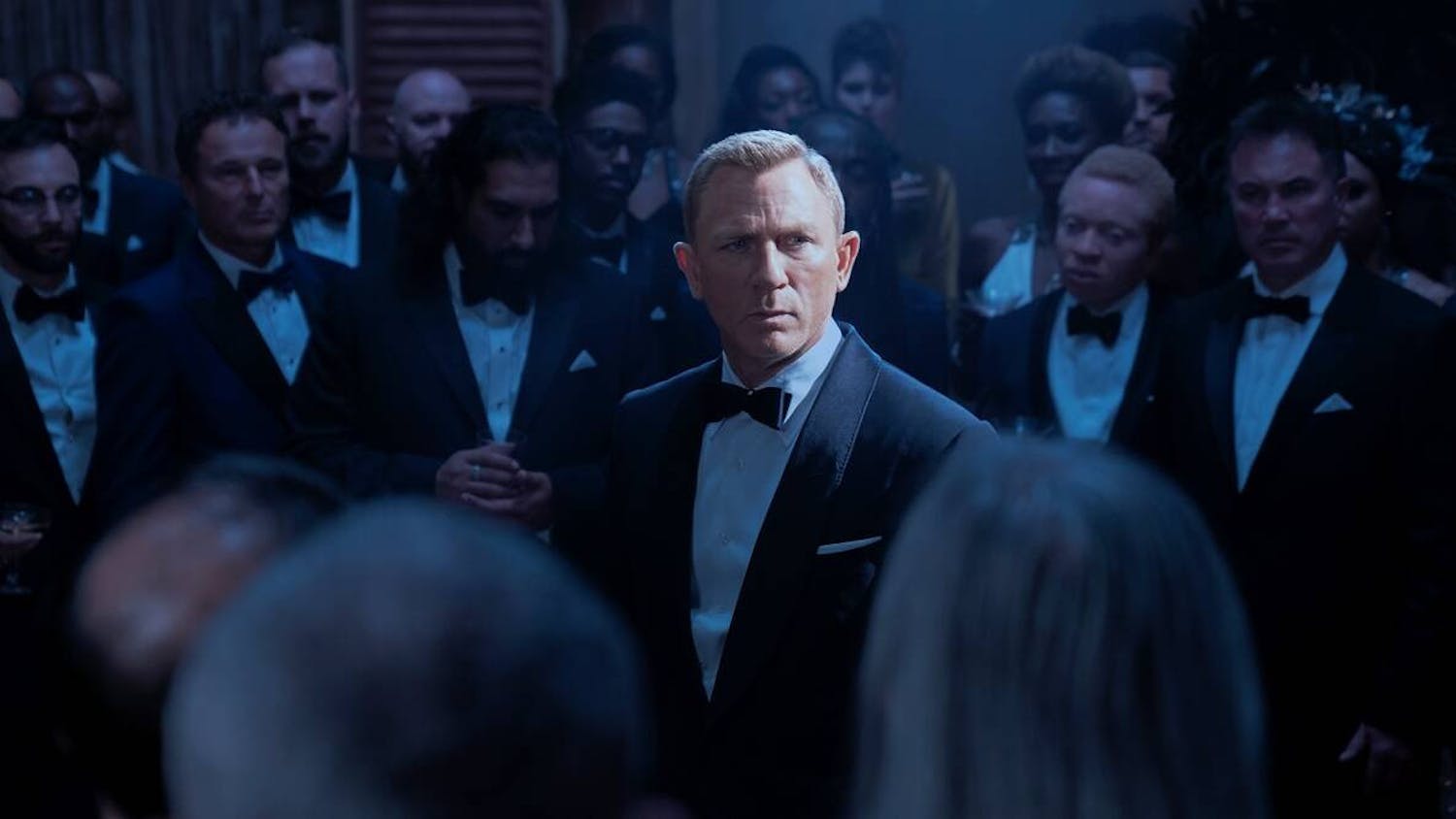
“No Time to Die” is a big movie — big in budget, big in story and big in spectacle. But for the 25th film in the 007 series, directed by Cary Joji Fukunaga and featuring the last of five turns as James Bond for star Daniel Craig, nothing plays a larger role than the beating heart at its center: Craig. Amidst the epic sweep of this 163-minute blockbuster, there are moments of intimacy as we get to experience the humor, love and heartbreak layered beneath Bond’s steely outer shell. Being a 007 movie, there is always another shootout or high-speed chase to disrupt the serenity of these quieter moments, but the intensity of the action sequences is elevated by a deepened sympathy for the man at the center of it all. This emphasis on the humanity of the iconic protagonist sets the film apart from its predecessors, solidifying its status as a resounding cinematic success and one of the best films of the year.
The movie is best experienced when viewed as the second part of the storyline started in Sam Mendes’ “Spectre.” At the end of this 2015 entry, Bond leaves active service after capturing the leader of a terrorist organization to quietly retire with Madeleine Swann (Léa Seydoux). Bond has a well-documented history of operating on a one-woman-per-movie basis, but Swann is different. Something about her touches a deeper part of Bond, and faced with the choice of remaining an MI6 agent or living the rest of his life with her, he chooses love.
It is here that “No Time to Die” begins. Bond and Swann are enjoying a secluded romance in Matera, Italy, when their peace is disrupted by the resurgence of enemies from the couple’s past. Suspecting Swann of betrayal, Bond sends her off on a train with the parting words, “you will never see me again.” The procedural title sequence ensues, featuring a haunting rendition of the “No Time to Die” theme by Billie Eilish, and we are sent off into the main body of the film to watch Bond grapple with a diabolical terrorist (Rami Malek) and reconcile his love for Swann.
Part of the film’s success in opening the inner workings of its protagonist must be credited to the writers. Fukunaga, Phoebe Waller-Bridge, and franchise veterans Neal Purvis and Robert Wade craft the action of the story around a series of endearing human interactions. The opening romance sets the tone for the rest of the film, and its influence over the action provides an emotional undercurrent that reminds viewers why it matters if Bond survives the next gunfight. Surrounding these shootouts are tender moments between Bond and Swann that, while seemingly more appropriate for the standard romantic comedy, add a level of emotion never before delivered by a 007 movie.
The writers, though, are only setting these emotional pins up — it’s Craig who knocks them down. Even before “No Time to Die”, Craig’s take on the classic character has been praised as possessing real human depth in comparison to his predecessors. Beginning in Martin Campbell’s “Casino Royale” and all the way through Mendes’ “Spectre,” audiences perceived a hard-edged vulnerability in Craig’s portrayal that was far removed from the cool panache of older versions of the character. This emotional depth simmered below the veneer of Craig’s character for the previous four films, but in “No Time to Die,” it boils to the surface.
Craig conveys anger at allegedly being betrayed by Swann in the film’s opening, but as the train carrying her away disappears, there is a terrible grief perceptible in his eyes. When working with a talented but young agent in Cuba (played to perfection by Ana de Armas), he uses the mission to playfully impart wisdom to the young woman in whom he sees so much of the eager energy that he himself once possessed. “You were excellent,” he says to de Armas’s Paloma at the end of their partnership, delivered with the pride of a mentor amazed at the great progress of his pupil.
Though further instances of Craig’s spoken sincerity cannot be revealed for the sake of spoilers, audiences should know to look for the intense emotion he conveys even without speaking. This is especially true during the scenes when moments of deep emotion are unexpected. The actor’s intense blue eyes have always been a source of fascination for fans, but in “No Time to Die,” their determined gaze during the most bombastic action sequences reflects more than a desire to complete the mission. That’s because for Craig’s Bond, the mission in this last adventure may be nothing more than making it home to the ones he loves.
Jack Torpey '24 (he/him) is an Arts and Culture Editor. He writes film reviews for the Reel Critic column.
Jack is studying English with a minor in Film and Media Culture. Outside The Campus, he works as a peer writing tutor at the Writing Center and is a member of the Middlebury Consulting Group.


